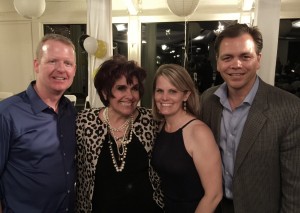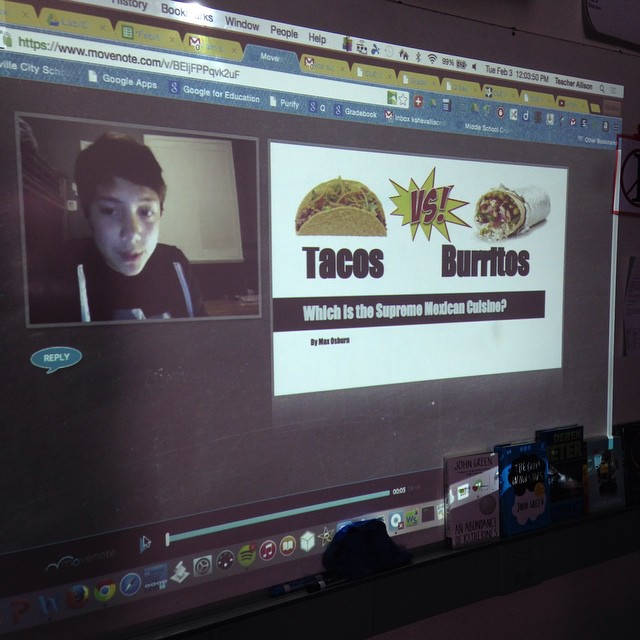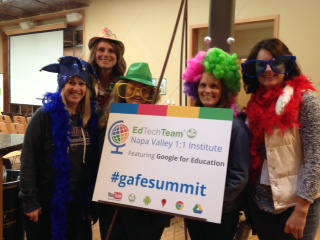“Wait. You ran in the rain, you ran in the cold and THIS was your worst year?”
Three and a half years ago I decided to run my first marathon. I had started running long distances a few years before and had fallen in love with feel of the asphalt beneath my feet, the tranquility I found in losing myself to the run and the sense of accomplishment at the end. The pain of sore muscles (and the occasional scraped knee) was badge of honor.
I’m sure it wasn’t a shock to my friends and family when I decided to take it the extra step–or an extra 13.1 miles. I’ve always been a bit of an overachiever. Luckily, I had a crazy group of women who decided to commit to the insanity with me.
Training: Don’t let anyone tell you differently: training is hard. Harder than the marathon. It’s like having a second job. When I wasn’t grading stacks of essays, unloading the dishwasher, throwing in a load of laundry or breaking up a bickering match between the offspring, I was running. I’d get up at 3:45 in the morning because after work there’s always soccer practice and some sort of PTC event. I was meeting those crazy women in the pitch black on a Saturday morning because someone had a baby shower at 11, and getting up early is always better than running alone. I took to cussing out the “dreadmill” at 5am because it’s storming outside. And I was tired. ALL THE TIME. Turns out, the hard part isn’t running all those miles, it’s finding the time to run them: all 400+ training miles.
First Marathon: The Blind Puppy— The first marathon is filled with hope. I had no idea what to expect. Like a puppy at the start, the tapering of training had left me eager to run. Standing at the start I thought, “I haven’t run enough.” But I started. Focused. Determined. It was during one of the worst rain storms in the history of the California International Marathon. The rain was so heavy, at points we were wading through streams just to cross the street, wind gusting, knocking you a bit off balance. The one thing I’ll always remember about this first race is truly comprehending “The Wall”. In a normal marathon training schedule, the furthest you run is 20 miles. Adrenaline is supposed to take you the last six. Bull. IT SUCKS. Those last miles are a pure torturous mind game. I questioned my sanity, will and ability to finish. The negotiations of walking began. But somehow, I crossed the finish line. I had hoped I’d feel this amazing sense of accomplishment, maybe even cry. Nope. Relief. I was so glad it was over. Never again.
Marathon #2: The Redemption Run–After my legs had begun working properly again, all I could think was, “I really should have done better.” I must redeem myself. So I signed up to do it all over again. Now I had something to prove. The training still SUCKED, but I didn’t give myself any outs. I did every run. I pushed myself, I cross trained. It was like a darn Rocky movie, you know when he’s an over 40, short, snarky blonde. But I had the gift of foresight. I understood the run. The wall would not take me this time. The forecast for my second: 15 degrees at the start. That was the coldest CIM on record. Great. The volunteers made us walk at the water stations because of the ice, and my snot was frozen to my nose, making it hard to breathe. I persevered, though, taking 23 minutes off my previous time, PRing the crap out of that run and coming in under 5 hours, which is all I ever wanted. I was satisfied.
Marathon #3: The Why the H not Run— I’ve done it twice, why not a third? This is the point that someone should have intervened. I blame those crazy women who encourage me to run. The training started off well enough, but it was evident by week four that I lacked motivation, and every run seemed to be a chore. I had nothing to prove. My heart wasn’t in it. I really started to hate it all. It was of course absolutely gorgeous running weather: sunny with a high of 68. The best weather, paired with my worst attitude.
I joked that I was “Derek Jetering” this one. Not going out with a World Series win, but at least a walk off single in my last home game. My expectations were low, but I hoped to at least enjoy it. At about mile 10 it was evident I wasn’t going to beat my time from last year, so I stopped caring and decided to start savoring. For the first time in the three years, I paid attention to where I was: the city, the street, all the surroundings. By mile 22, my usual “wall”, I gave myself permission to walk a few steps, especially since my IT band felt like it was going to snap. I would run some, walk some, listening to my body. At mile 23, I even snapped a selfie, a long standing joke with my running friends. (Kristina would NEVER walk or snap a selfie.) But hey, this was marathon number three. I just didn’t care. Yeah, I finished, adding 40 minutes to my PR from the year before. However, I had the best time of the three, and crossed that finish line with a smile, knowing I didn’t have to do this again. I was done. For now.
I am taking a break from marathons for a while. The commitment it takes to train for a marathon has to be filled with heart, or it just isn’t worth it. You have to get something out of it. One of my students asked me the next day why I ran the marathon. I replied, “Because I’m stupid.” Until I have a better answer, I’m sticking to shorter runs. Nothing is worth doing if it lacks passion.
#runningisstupid




